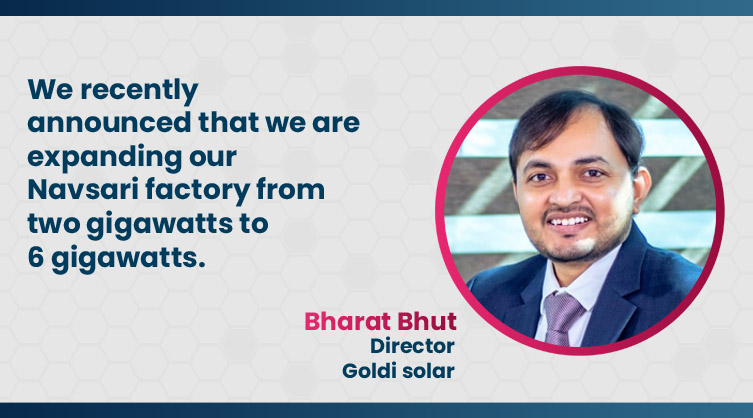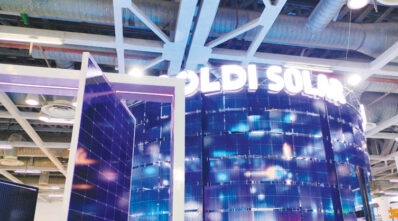HELOC series can reduce LCOE by 6.6 percent
By Admin November 19, 2022 11:28 am IST
By Admin November 19, 2022 11:28 am IST

In an exclusive interview, Goldi Solar highlights key features of their recently launched HELOC plus series and their latest innovative circuit design with multi-busbar technology that prevents current losses.
Can you provide details about the distinctive innovations you showcased at REI Expo?
A better version of the HELOC series that we introduced last year, the HELOC Plus series, has been released. The Heloc Pro module series features mono-facial and bi-facial modules with an M10 wafer size. HELOC stands for “High Efficiency, Low on Carbon”. The name is our ode to a solar-powered, energy-efficient, low-carbon economy. We’ve made another innovation in the 710-watt peak HELOC Plus HJT (heterojunction) module. HJT is a very high-efficiency module and a relatively new market technology. The higher efficiency of the HJT has led to several of its properties, such as a very long power generation time and a low-temperature coefficient. A minimal area is required, and very few space watchers are needed. The project’s overall LCOE is consequently reduced by 6.6 percent. The ROI for the solar project was thus quite good.
How do you look at the need to increase the load capacities at your Navsari factory?
The recently released products are modern and standard. Our team’s products are entirely manufactured at the Navsari factory in India. We can set up to 5-yard lines as current install capacities are 2 gigawatts. The entire infrastructure of Navsari can scale up to 5 gigawatts. Further lines will be added in the future; we recently announced that we are expanding this two-gigawatt factory to a 6-gigawatt factory. We also have a 500-megawatt factory of our own in Pipodara, Surat.
What kinds of innovations are happening in the Navsari factory?
Since solar technology advancements are standard, we are forming a research and development lab to monitor product quality and create new products. Several exciting products are being produced in plants appropriate for the Indian market and environment. The Multi-Busbar technology we have at Navsari is unique to the Indian market, and this facility is automatic with numerous innovative procedures and checkpoints. As a result, we have created a skill set and processes at Navsari, a manufacturer of the highest calibre.
What kinds of challenges are currently being faced by the solar sector?
The government is helping us with the BCD, ALMM, PLI, and many other programmes, as well as the residential rooftop scheme KUSUM yojna, which keeps manufacturers like us operating continuously throughout the year, but challenges are less common, and opportunities are more plentiful. The government is therefore providing as much assistance as it can. Still, if state and federal policies are aligned, and other compliance is necessary—for example, utility companies, discoms, and state requirements—then we can develop quickly.

We use cookies to personalize your experience. By continuing to visit this website you agree to our Terms & Conditions, Privacy Policy and Cookie Policy.